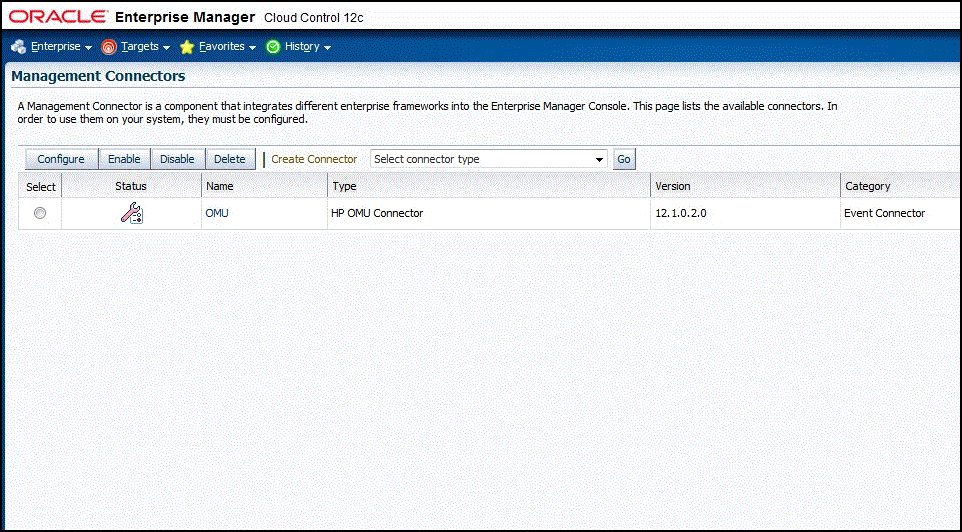3.1 Creating a Connector Instance
After the OMU Connector is installed in Enterprise Manager, you need to create one or more instances of this connector type. A connector instance refers to the configured instance of the connector with specific details, such as connector name, web-service end-points, username/password, and so forth of the OMU system. Multiple connector instances for the same connector type are supported, which provides the flexibility to configure multiple OMU systems with Enterprise Manager.
For example, you could have a production database and test database that Enterprise Manager monitors, and you could create two different connector instances that point to two different OMU systems, and then associate each instance with separate event rules. Using this setup, you can forward Enterprise Manager events generated from these two databases to two different OMU systems.
To create a connector instance:
-
From the Setup menu of the Enterprise Manager console, select Extensibility, then Management Connectors.
-
Select a connector type of OMU from the Create Connector drop-down list, then click Go.
-
Enter the connector name and description on the next page and click OK.
The connector instance appears as unconfigured in the Connector Setup page. Figure 3-1 shows an unconfigured OMU connector instance.
Figure 3-1 Unconfigured HP OMU Connector
